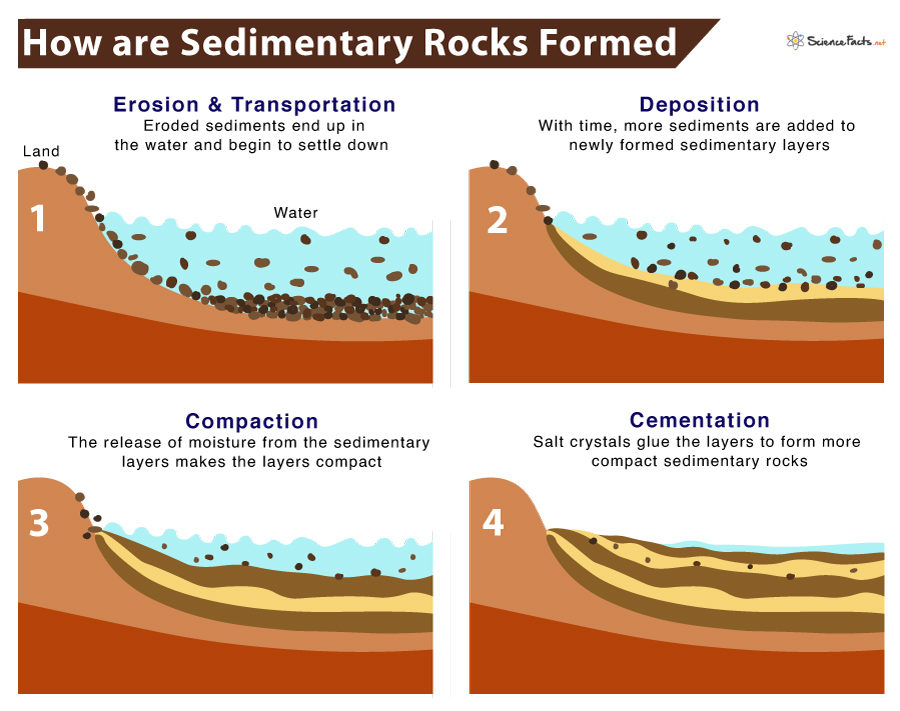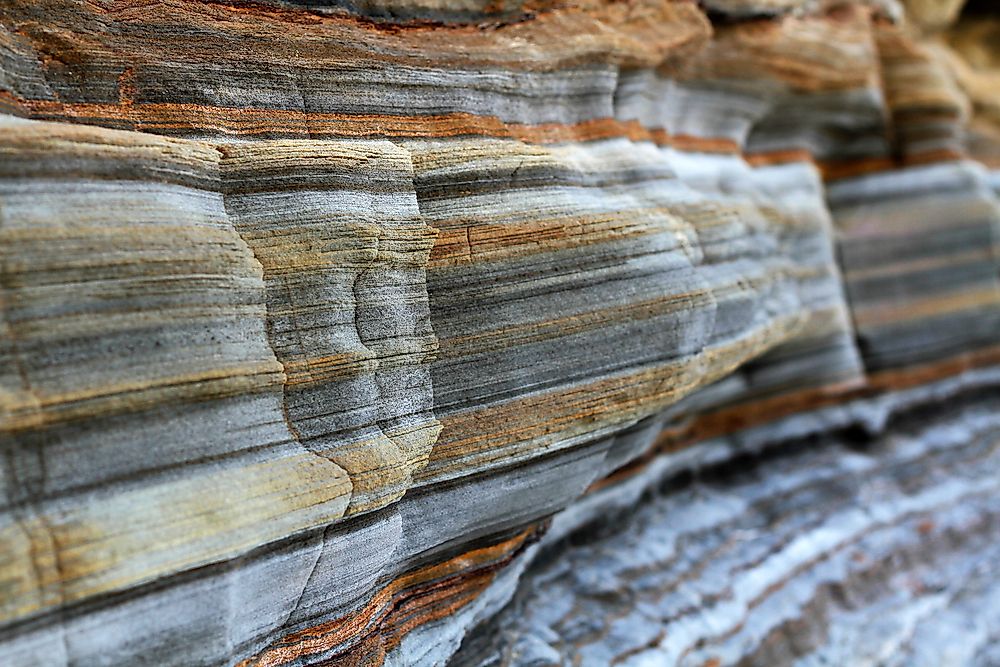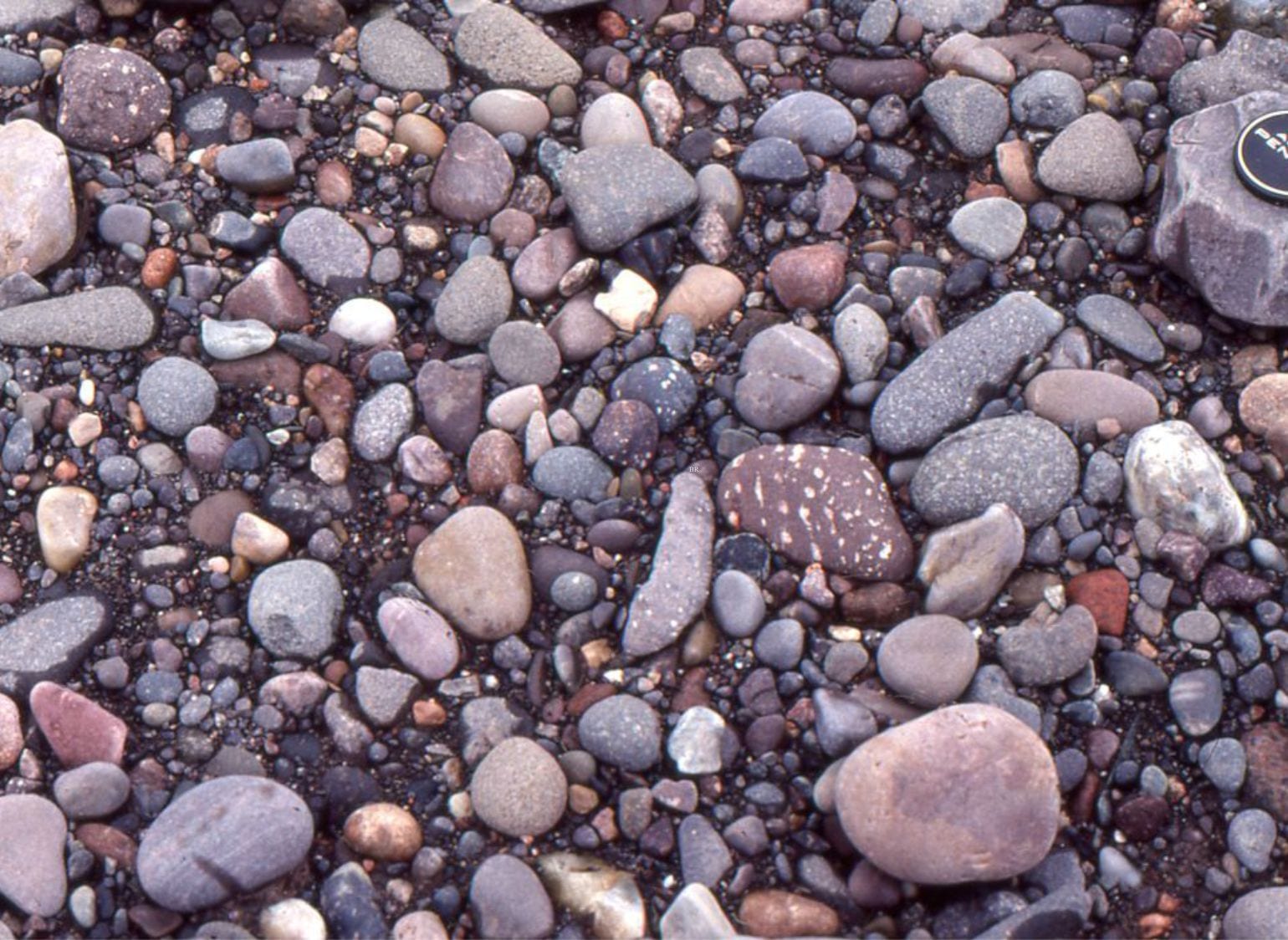When you hear the word “rock,” your mind might wander to a boulder by a trail, your childhood pebble collection, or even your favorite classic rock band. But when we dive into the fascinating world of geology, rocks hold a much deeper (pun intended) significance. And then there are sediments—the tiny, often overlooked bits and pieces of Earth’s grand puzzle. Which brings us to today’s question: Is a rock a sediment?
What Is a Rock?
Rocks are like the Earth’s memory book, recording the passage of time and the story of our planet in their layers, minerals, and textures. But let’s break down what we mean by “rock.”
Definition of a Rock
In geology, a rock is defined as a naturally occurring, solid substance made up of one or more minerals or mineraloids. Think of it as the cake of geology, with minerals acting as the ingredients. Some rocks, like granite, are made up of several different minerals, while others, like limestone, are simpler in composition.
Key Characteristics of Rocks:
- Naturally occurring: Rocks are found in nature, not in your backyard pottery kiln.
- Solid structure: Unlike fluids or gases, rocks maintain a defined shape.
- Mineral composition: Most rocks are an aggregate of minerals, though some may contain organic material.
Types of Rocks
Rocks are grouped into three main categories based on their formation. These categories are like the Earth’s personality traits—always changing and adapting over time.
- Igneous Rocks
- Formed from cooled and solidified magma or lava.
- Examples: Granite, basalt.
- Fun fact: The word “igneous” comes from the Latin ignis, meaning “fire.” Think volcanic fireworks!
- Sedimentary Rocks
- Created by the compression and cementation of sediments over time.
- Examples: Sandstone, shale, limestone.
- Did you know? Fossils are often found in sedimentary rocks because they preserve layers of Earth’s history.
- Metamorphic Rocks
- Formed when existing rocks are subjected to intense heat and pressure, transforming them into something new.
- Examples: Marble, slate.
- Fun analogy: Metamorphic rocks are like diamonds made under pressure—except they’re not always that shiny.
Common Questions About Rocks
1. How are rocks classified?
Rocks are classified based on their mineral composition, texture, and the process of their formation. Geologists also consider factors like grain size and the environment where the rock was formed.
2. What makes a rock unique compared to other natural materials?
Unlike sediments or soil, rocks are solid and cohesive. They also act as the foundation of the Earth’s crust, while sediments are more transient, moving around with the help of wind, water, and gravity.
Quick Quiz: What’s your favorite rock—igneous, sedimentary, or metamorphic? Let us know in the comments! (We promise not to judge your taste in rocks.) 😄

What Are Sediments?
If rocks are the main characters in geology, then sediments are their ever-evolving understudies. Sediments are the tiny fragments of rocks, minerals, or organic materials that have been broken down and are waiting for their big moment—to transform into something more. But what exactly are sediments, and how do they form? Let’s take a closer look.
Definition of Sediments
Sediments are loose, unconsolidated particles or materials that originate from the weathering and erosion of rocks, as well as from biological or chemical processes. They can range in size from the tiniest grains of sand to large boulders. Essentially, sediments are the building blocks for new geological formations like sedimentary rocks.
Key Features of Sediments:
- Unconsolidated nature: Unlike rocks, sediments are not solid masses; they’re loose and moveable.
- Varied origins: Sediments can be clastic (from physical rock breakdown), chemical (from mineral precipitation), or organic (from biological activity).
- Transportability: Sediments are often carried by natural forces like wind, water, or ice.
How Sediments Are Formed
The journey from rock to sediment is a story of persistence and time, driven by nature’s relentless forces. Let’s break it down:
- Weathering and Erosion
- Weathering: The breakdown of rocks into smaller pieces through physical (e.g., freeze-thaw cycles), chemical (e.g., acid rain), or biological (e.g., plant roots) processes.
- Erosion: The movement of weathered material by agents like water, wind, or glaciers. Picture a mighty river carving through a canyon, carrying tiny rock fragments downstream.
- Transportation
- Sediments don’t stay put; they hitch rides with flowing rivers, ocean currents, wind gusts, or even glacial movement.
- Fun fact: The speed and energy of transportation determine the size of sediments that can be moved. Fast-flowing rivers can carry boulders, while slow-moving streams transport fine silt.
- Deposition
- Eventually, sediments settle in a new location, creating layers in riverbeds, deltas, beaches, or ocean floors. Over time, these layers build up and may eventually form sedimentary rocks.
Types of Sediments
Sediments are as diverse as the processes that create them. Here’s a closer look at their three main types:
- Clastic Sediments
- Origin: Fragments of pre-existing rocks broken down by weathering and erosion.
- Examples: Sand, gravel, clay.
- Common settings: Riverbeds, beaches, deserts.
- Chemical Sediments
- Origin: Precipitation of minerals from solutions, often in bodies of water.
- Examples: Salt crystals, gypsum, limestone.
- Fun trivia: Chemical sediments often form in environments like evaporating lakes.
- Organic Sediments
- Origin: Remains of plants and animals, such as shells, bones, or decayed vegetation.
- Examples: Coal (from plant material), chalk (from microscopic organisms).
- Did you know? The famous White Cliffs of Dover in England are made of organic sedimentary rock—chalk.
Quick Comparison: Rocks vs. Sediments
| Feature | Rocks | Sediments |
|---|---|---|
| State | Solid | Loose |
| Composition | Minerals and/or organic material | Rock fragments, minerals, or organic matter |
| Formation | Long-term geological processes | Short-term physical or chemical processes |
| Movement | Stationary | Transported by natural forces |
A Fun Fact About Sediments
The Sahara Desert, one of the driest places on Earth, is a major source of sediments that travel across the globe. Winds carry millions of tons of sand and dust from the Sahara, fertilizing rainforests in South America and even reaching the Caribbean islands. Sediments truly know no boundaries!

Is a Rock a Sediment?
Now that we understand rocks and sediments individually, it’s time to address the million-dollar question: Is a rock a sediment? The short answer is no—a rock is not a sediment. But the longer answer is far more interesting because rocks and sediments are intricately connected in a never-ending geological cycle.
The Relationship Between Rocks and Sediments
To put it simply, rocks are the parents, and sediments are their offspring. Over millions of years, rocks break down through weathering and erosion, creating sediments. These sediments can eventually come together under the right conditions to form new rocks. It’s a cyclical relationship that keeps our planet constantly evolving.
Think of it like this: if rocks are whole loaves of bread, sediments are the crumbs left behind after slicing or crumbling the loaf. Over time, those crumbs might get compacted and re-baked into a new loaf. Deliciously poetic, right?
Differences Between Rocks and Sediments
While rocks and sediments are related, they differ in key ways:
- Physical State: Rocks are solid and cohesive, while sediments are loose and unconsolidated. A rock holds its shape, whereas sediments scatter and flow.
- Formation Process: Rocks are formed over long geological periods through processes like cooling, compression, or metamorphosis. Sediments form relatively quickly through the breakdown of rocks and the deposition of particles.
- Role in the Rock Cycle: Rocks can break down into sediments, but sediments can also transform into rocks. This dynamic relationship is essential for the rock cycle.
When Does a Rock Become a Sediment?
The transformation of a rock into a sediment begins with weathering, which breaks the rock into smaller pieces. Once these pieces are detached from their parent rock, they become sediments. Here’s how it happens step-by-step:
- Weathering: Physical forces like freezing and thawing, or chemical reactions like oxidation, weaken the rock.
- Erosion: The broken pieces are carried away by water, wind, or ice.
- Sedimentation: The particles settle in a new location, ready to start their next journey.
Example: Picture a towering cliff being battered by waves over centuries. Gradually, bits of the cliff fall off, becoming sand on the beach below. This sand is the sediment born from the rocky cliff.
The Rock-to-Sediment Transformation in Nature
Let’s explore a real-world case study:
Case Study: The Grand Canyon
The Grand Canyon, one of the world’s most stunning geological features, is an excellent example of rocks turning into sediments. The Colorado River, over millions of years, has carved its way through layers of rock, creating deep gorges. Along the way, the river carried away sediments, which were deposited downstream, eventually forming sedimentary rock formations like sandstone.
- Rocks like limestone and sandstone in the canyon were weathered and eroded.
- These sediments were transported by the river and redeposited in calmer areas.
- Over time, these sediments could transform into new sedimentary rocks.
Fun Thought Experiment
Imagine you’re holding a small pebble that you picked up on a beach. That pebble might have started as part of a massive mountain millions of years ago. Through countless weathering and erosion cycles, it broke down, traveled to the sea, and now sits in your hand as a humble sediment.

The Rock Cycle: Nature’s Recycling System
Rocks and sediments are part of a grand geological dance, choreographed by time and Earth’s natural forces. This endless transformation is called the rock cycle, and it’s one of the most fundamental processes that shapes our planet. To fully appreciate the relationship between rocks and sediments, understanding the rock cycle is key.
Overview of the Rock Cycle
The rock cycle describes how rocks change from one type to another through processes like weathering, erosion, heat, pressure, and cooling. It’s a continuous loop that can take millions of years to complete, but every stage plays an important role in maintaining Earth’s dynamic surface.
Here’s a simplified look at the cycle:
- Igneous rocks form from cooling magma or lava.
- These rocks are broken down into sediments through weathering and erosion.
- Sediments accumulate and compact over time, becoming sedimentary rocks.
- With heat and pressure, sedimentary or igneous rocks transform into metamorphic rocks.
- Metamorphic rocks can melt back into magma, starting the cycle anew.
Fun Fact: The rock cycle is like the ultimate recycling program—nothing goes to waste!
Sedimentary Rocks in the Cycle
Sedimentary rocks hold a special place in the rock cycle because they are born directly from sediments. Let’s take a closer look at how this transformation happens:
- Sediment Deposition
- Sediments settle in layers in places like riverbeds, lakes, or ocean floors.
- Heavier particles settle first, while finer ones like silt and clay take longer to deposit.
- Compaction
- Over time, the weight of overlying sediments compresses the lower layers, squeezing out water and reducing pore spaces.
- Cementation
- Minerals like quartz and calcite act as natural glue, binding the sediments together to form solid rock.
Result: Voilà! You get sedimentary rocks like sandstone, limestone, or shale.
The Role of Heat and Pressure
The story doesn’t end with sedimentary rocks. Under the right conditions, they can undergo further transformation. Deep within Earth’s crust, the heat from magma and the pressure from tectonic forces can alter their structure and composition, turning them into metamorphic rocks.
Example: Shale, a common sedimentary rock, can morph into slate when subjected to heat and pressure. With even more heat, it could transform into schist or gneiss.
Why Is the Rock Cycle Important?
Understanding the rock cycle isn’t just a fun academic exercise—it has real-world implications for geology, ecology, and even human industries. Here’s why it matters:
- Reveals Earth’s history: Rocks and sediments provide clues about past climates, environments, and tectonic activity.
- Informs resource management: Minerals, fossil fuels, and building materials all originate from the rock cycle.
- Highlights the interconnectedness of nature: The cycle reminds us that Earth’s processes are deeply interwoven.
Rock Cycle Diagram
Here’s a handy visual to illustrate the cycle:
| Process | Result | Example |
|---|---|---|
| Cooling of magma | Igneous rock | Granite, basalt |
| Weathering and erosion | Sediments | Sand, clay |
| Compaction and cementation | Sedimentary rock | Limestone, shale |
| Heat and pressure | Metamorphic rock | Marble, slate |
| Melting | Magma | Lava in volcanic eruptions |
Case Study: Hawaii’s Rock Cycle in Action
Hawaii offers a fascinating look at the rock cycle in real time. Here’s how it works on these volcanic islands:
- Magma from Earth’s mantle erupts as lava, forming igneous rocks like basalt.
- Over time, waves and wind weather the basalt into sediments.
- Sediments are carried by rivers and deposited in calmer waters, where they may eventually form sedimentary rocks.
- Heat from volcanic activity can metamorphose these rocks, completing the cycle.
The rock cycle isn’t just theoretical—it’s happening all around us, shaping landscapes and creating natural beauty.